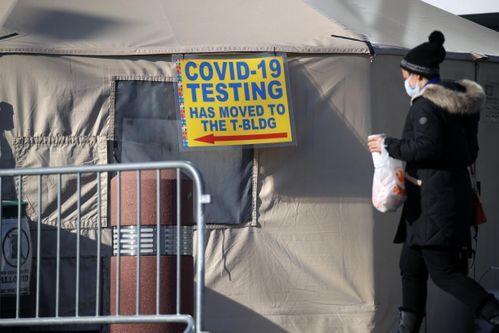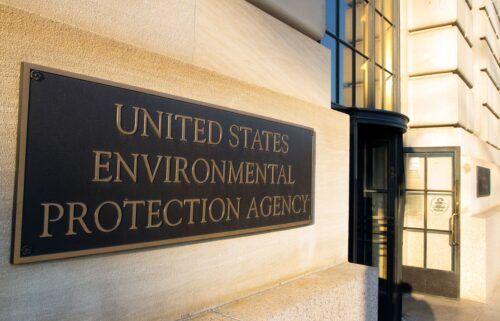Why testing for Covid-19 is still important

Covid-19 testing numbers are dropping in the US. And that’s bad news.
Without testing, there’s no way to keep track of where the pandemic is headed and whether vaccines are working. And there’s no way to make use of one of the most important tools for fighting infectious diseases: contact tracing.
“While the public may view vaccination as a priority right now – and it is a priority – widespread testing still is essential for infection control,” Romney Humphries, medical director of the Clinical Microbiology Laboratory at Vanderbilt University Medical Center, said during an Infectious Diseases Society of America briefing Thursday.
“This will help us track the real impact. Are we truly seeing a reduction in cases?” she said. Testing can also help track variants.
The US has recorded an average of about 1.5 million Covid-19 tests per day over recent days, according to data from The COVID Tracking Project.
That’s about 26% fewer than the average in mid-January, when the US hit a peak seven-day average of more than 2 million tests reported on January 15. The rate has begun to pick up again, but only slightly.
“If we don’t test, we don’t know how much infection is there,” Dr. Mary Hayden, chief of the Division of Infectious Diseases and director of the Division of Clinical Microbiology at Rush University Medical Center, said during the IDSA briefing.
She added that while infection rates have fallen, they are still high, and in some places higher than they were over the summer.
Daily Community Profile Reports from the White House Covid-19 team have been tracking various indicators, including testing.
In terms of testing rates, a seven-day daily average of at least five tests for every 100 people is ideal. But in a report published this week, only five states reached that threshold over seven-day period, landing them in the “dark green” category: Rhode Island, Vermont, Massachusetts, New York and Alaska.
Eight states were in the “red” or “dark red,” which meant that there was less than one test for every 100 people. States in this category were Oklahoma, Missouri, South Dakota, Mississippi, New Hampshire, California and Georgia.
With the current spread of infection, Hayden said that she doesn’t think the country is at a place where it can be relaxing overall strategies and reducing testing.
Testing is also an important tool for reasons beyond diagnostics, including determining quarantine requirements and tracking the evolution of the pandemic, Humphries said.
“I think one of the hugest messages is for the public: if you have symptoms, it is so important for you to go in and be tested and determine if you’re positive or not,” said Humphries.
What is being seen in labs and from data is a reduction in the number of people who are coming in to be tested based on symptoms, according to Humphries.
What’s happening in “red” and “dark red” states
California has had one of the largest drops in testing rates since mid-January, according to federal data. The state health department said that testing volume has decreased for the fifth straight week. The seven-day average went down to about 181,000 tests per day from about 230,000 tests per day.
The California Department of Public Health asked labs that highlighted a decline in PCR testing orders over the past couple of weeks and found supply was not a factor. Rather, people simply are not being tested.
In Oklahoma, people are simply not seeking testing, Travis Kirkpatrick, deputy commissioner at the Oklahoma State Department of Health, told CNN.
He attributed this to several factors, including a high rate of vaccination in the state, warmer weather and declining hospitalization and case rates. Kirkpatrick also thinks his state is experiencing some Covid fatigue.
“We have continued to offer testing. We continue to find ways to expand testing,” he said. “There’s all kinds of ways that we’re trying to continue to push testing from a policy standpoint, from a public health standpoint and then offer it. But the lack of testing numbers, I think we attribute a lot more to appetite than anything else.”
It’s not yet time to sound alarm bells, Kirkpatrick said, but his department is cautious about people thinking they don’t need to be tested. He said that Oklahoma will continue to invest in testing, calling it their best tool for surveillance.
How the “dark green” states get there
In Vermont, one of the five states where testing is still at high rates, an emphasis on contact tracing is a big help, said Tracy Dolan, deputy commissioner of public health at the Vermont Department of Health.
Plus, testing is used to help people leave quarantine earlier, Dolan told CNN.
“Early on we created some policies more aggressive than the CDC,” she said.
“The state has a strict travel quarantine policy, and that best way to get out is to test early. It definitely incentivizes people.”
Vermont has also prioritized testing from the beginning, Dolan said, making it widely available and free. Most places in Vermont are within a 30 minute drive from a testing site and most sites are open seven days a week. The state pulls in extra testing resources when there are outbreaks, and has a “steady” surveillance testing.
Local health officials promote testing through targeted social media if there is a rise in cases and communities and leaders have supported testing from the beginning, Dolan said.

